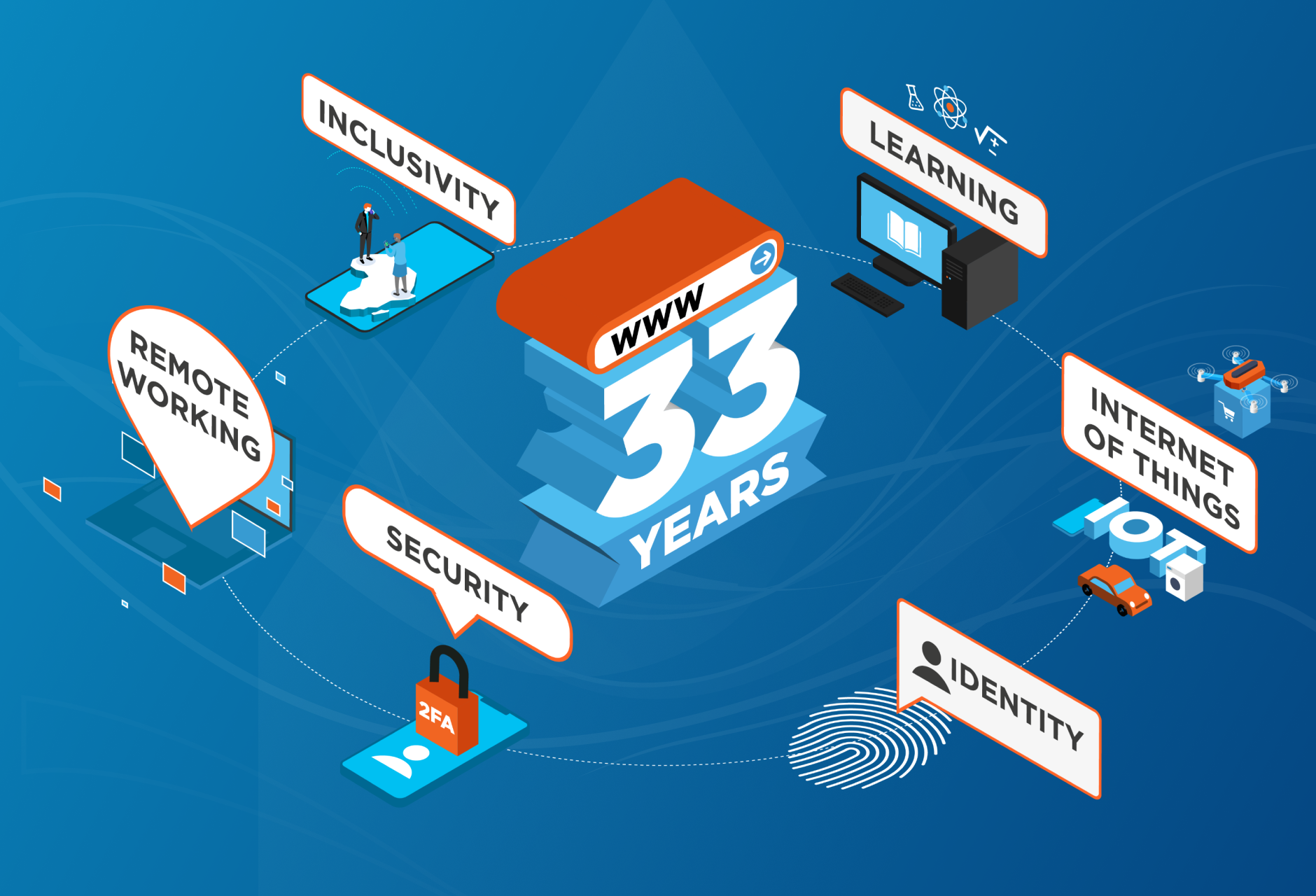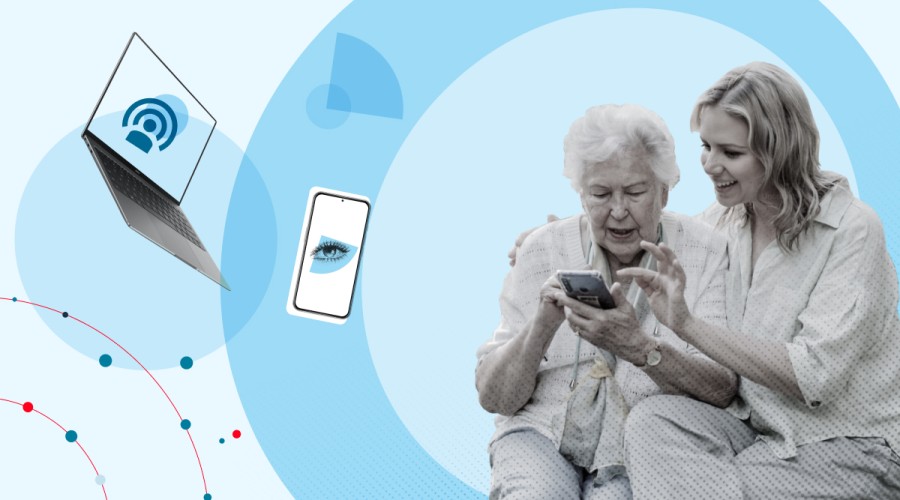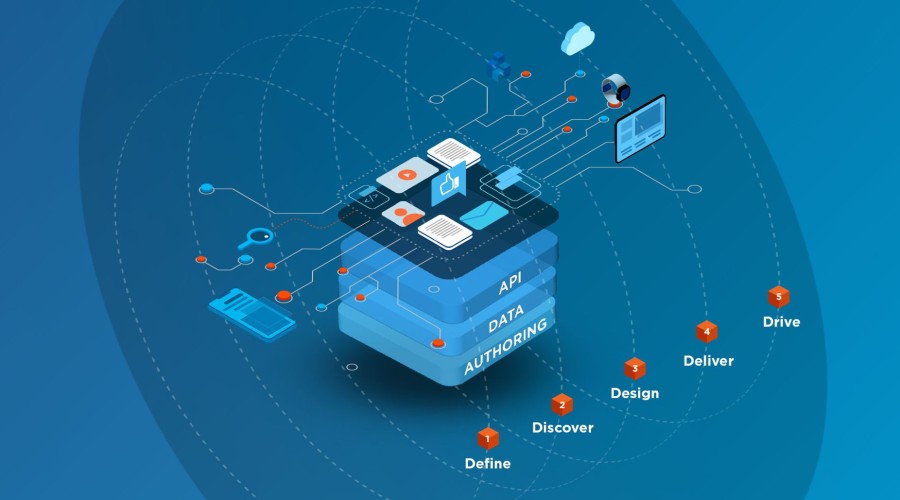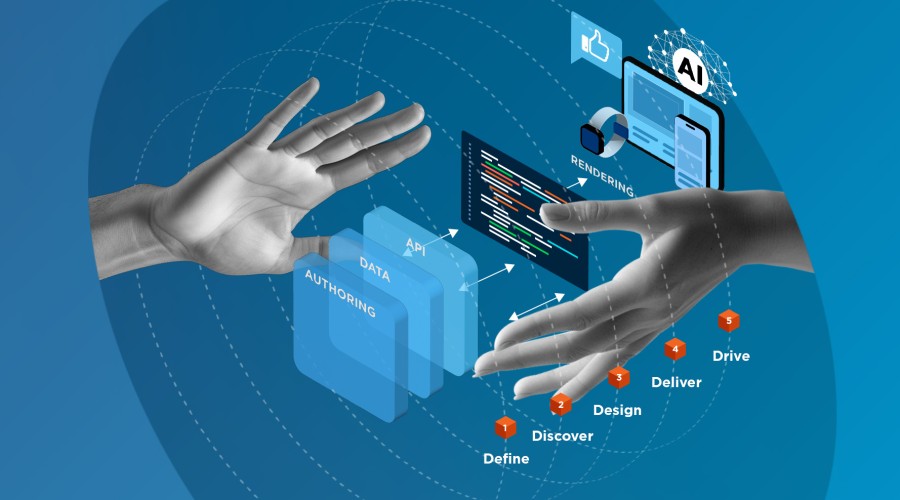This month, it’s been 33 years since Sir Tim Berners-Lee wrote the paper that would change all our lives and give rise to the web as we know it in 2022.
Although back in 1989 the internet already existed in the form of a global network of connected computers, the invention of the world wide web meant that people across the world could now use those connections to share documents and information in the form of websites.
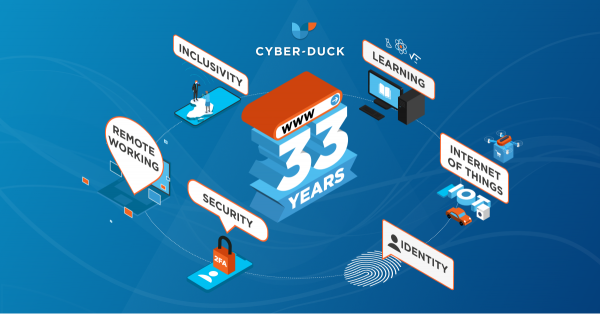
Last year, we looked back in time to see which predictions about the web came true, which were eerily accurate, and who got it horribly wrong.
This year, I want to look ahead and think about the future development of the web.
Six key areas stand out:
- Inclusion - Universal web access and inclusion
- Remote vs Hybrid - Remote working and the office of the future
- Learning – education in the digital era
- Privacy – if data is the new gold, how can we protect it?
- The Internet of Things – the ‘real’ world goes digital
- Identity – how to prove who we are in the digital space
There are some things that seem broadly true – for example, well-designed, ethical AI and blockchain will feature heavily in the future of the web. But we also know that there are big unknowns in the future of technology. If you’d asked me 33 years ago, I might have predicted video streaming, but perhaps not the way social networks have entwined themselves into the most personal parts of our lives.
So, let’s look at how each area might develop in the years to come.
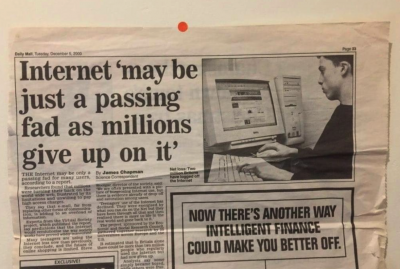
Thankfully for us, this headline from the year 2000 turned out to be wide of the mark. Credit: twitter.com/PoorlyAgedStuff
1. Universal web access and inclusion
Let’s start with digital inclusion and accessibility. One of the reasons the web was such a world-changing innovation was its potential inclusivity: it meant that devices with internet connections could now be widely used, getting people online en masse across the world. But what is the current state of digital inclusion in 2022? Can the web fulfil its potential to give all humans equal access to information? Will we all be able to engage with each other in the digital space? And can we close the digital divide?
This falls into two key areas.
1. Geographical accessibility
Does your village, city or country have fast internet access? You can’t access the web if you can’t get online. According to DEFRA, the average broadband speed in rural areas in England was 54 Mbit/s in 2020, compared with 81 Mbit/s in urban areas. Overseas, the issue is even more pronounced, and in some areas broadband infrastructure can be lacking entirely.
5G is expected to be widespread by 2025 and 6G is already under development, meaning connection speeds are likely to improve dramatically in the coming years, particularly in rural areas. But is by no means certain that this will be rolled out universally.
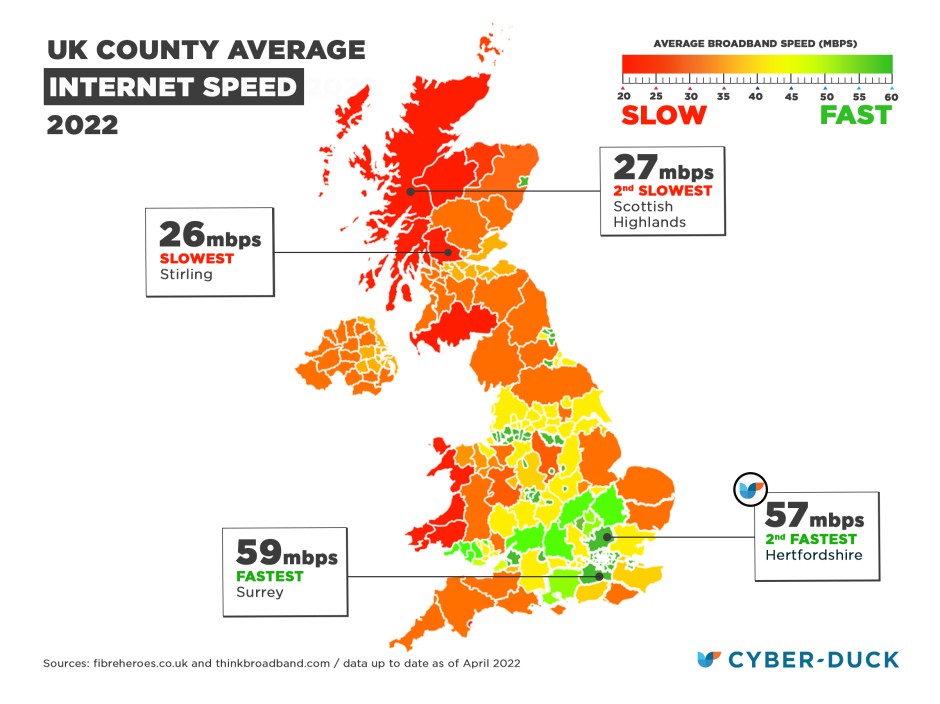 Map showing the UK’s superfast broadband coverage as of 2022. It’s clear that coverage is higher around major cities and lower in rural areas.
Map showing the UK’s superfast broadband coverage as of 2022. It’s clear that coverage is higher around major cities and lower in rural areas.
The United Nations Human Rights Council (UNHRC) recognises the web as an “indispensable tool for realising a range of human rights” and thus “access to the internet should be a priority”. Sir Tim Berners-Lee goes one step further, saying, “In today’s world, access to the internet is a lifeline. It should be a basic right.”
Several countries agree and have declared that right, including Finland, Estonia, Spain, Greece and Costa Rica. But the digital divide is still evident. Digital access as a human right is reserved for developed economies who can finance nationwide internet access – bringing to light the connection between the development and digital gap. A staggering 2.9 billion people globally have still never accessed the web. For Africa as a whole, that's currently less than a third (31%), with some Sub-Saharan countries still in single figures for access.
2. Accessible, inclusive websites
The second is individual accessibility: can you access information and engage with others online? In the UK, one in five of us has a permanent disability, with many more having temporary or situational disabilities. And around 1 in 6 adults in England have a literacy level below the reading age of 9-11. We’re used to working to WCAG guidelines, and with WCAG 3.0 on the way in 2023, my hope is that digital experiences will continue to improve.
We’re also seeing the value of more natural accessible interfaces, especially voice, being adopted into the mainstream. According to research by NPR, only 18% of Americans either do not have or never use voice search capabilities.
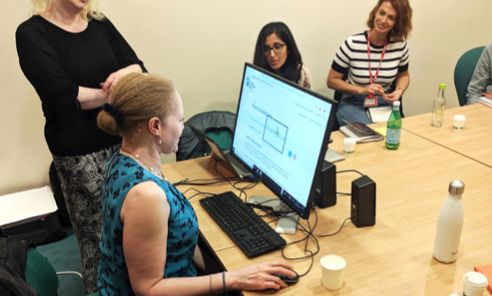
Designing and testing for accessibility are important parts of the UX process.
Prediction
There’s no question that access to the web is a fundamental human right. The pandemic has shown us how vital it is for work, education and personal connection – and as our interactions continue to shift online, we must ensure everyone can benefit. As Sir Tim Berners-Lee said, without it, one cannot function or partake fully in society.
That means we'll see a rise in the number of governments who will legislate to ensure websites and digital products are accessible – not just in developed countries, but globally. There’ll be more emphasis on meeting WCAG standards and user-centred design, to make sure that what we build works for everyone. Voice-enabled technologies and other alternatives to traditional device interfaces will gain wider adoption. And that can only be a good thing.
2. Remote working and the office of the future
Over the past two years, remote working has become a cornerstone of our ‘new normal’. At Cyber-Duck, the team all say they appreciate the flexibility and focus it gives them.
That’s in contrast to Clifford Stoll’s forecast – in 1995, he famously dismissed his peers’ predictions of "telecommuting workers … electronic town meetings and virtual communities" as ‘baloney’.
Of course, he was wrong. Today, remote working, company-wide Zoom meetings and virtual socials are commonplace.
At Cyber-Duck, some of our team were already working remotely. But the pandemic saw us shift everything to 100% remote (you can read six things we learnt from working from home here).
Our key successes were a result of:
- Managers adapting to support their teams
- Sharing our experiences
- Open communication through virtual town halls, lunch-and-learns and stand-ups
- Collaboration and productivity tools: we moved our clients beyond Slack, SharePoint and Zoom, into more specialist collaboration tools like Miro, Notion and ClickUp
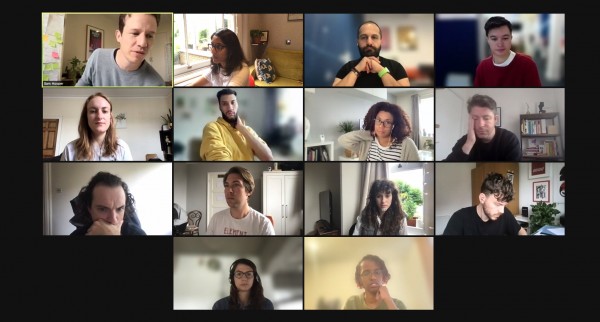
Hybrid working has become a way of life for the Cyber-Duck team.
Prediction
In recent months, we're seeing many companies move back to the office. But there won’t be a complete return to the pre-Covid working model - hybrid working is here to stay. Office buildings will no longer be limited to desks and chairs: multi-purpose rooms and spaces will be the new norm. The pandemic has fundamentally transformed the workplace.
Alphabet, Google’s parent company, has permanently adopted a ‘three days in the office/two days from home’ working model and has created an interactive meeting room, Campfire. In-person attendees sit interspersed with screens showing faces of people dialling in as if they are in the same space. Expect more of this to come.
3. Learning in a digital era
The internet has transformed into a space with endless opportunities for fun and innovative learning. We’ve all lost ourselves down educational rabbit holes on YouTube, Google Classroom, TikTok, the likes of Coursera and the king of all information websites, Wikipedia. Together, they hold the answer to (almost) all our imaginable queries.
But we still need guidance. As innovative education consultant George Couros says, “Technology will never replace great teachers, but technology in the hands of a great teacher can be transformational.” During the pandemic, those of us who home-schooled our children appreciated the skill and effort of teachers more than ever.
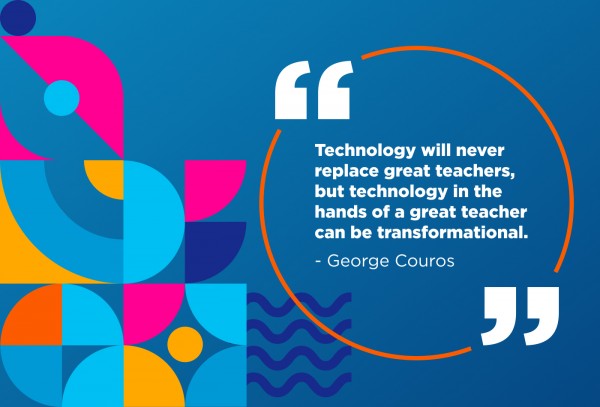
Prediction
It has been a long time since we waved goodbye to the days of encyclopaedias, as the web opened the door to a world of education with information literally at your fingertips. Now, the pandemic has forced educators and managers to utilise more technologies and adapt their teaching and training methodologies to virtual learning, leading to a new “learn from anywhere” approach. Over the next decade, education will continue to adjust in response to this shift.
With these advanced developments, a more inclusive online learning world will rise, widening the learning opportunities for people with geographical, physical or mental barriers. For example, the SAT exam for college admission in the US will be shortened and digitized as of 2023, making it accessible to a greater number of students and reducing much of the stress of the exam process.
With web innovation continuing to remove many of the traditional barriers to education, the number of people around the world who are learning, improving and advancing our skills will reach an all-time high. Coding has been part of the curriculum in UK schools since 2014, and with more and more students regarding coding knowledge as valuable for their future career prospects, digital skills will begin to move even more to the forefront of educational curricula around the world. However, ensuring the accuracy and quality of education and information will be vital, as we will discuss below.
4. Privacy and protecting our data
Way back in 1999, science fiction writer David Gerrold made an eerily accurate prediction when he said, “Having all that connectivity is going to destroy what’s left of everyone’s privacy.”
He was right. Governments do struggle to legislate technology – it's hard to keep up – and privacy has been no exception. We’ve seen something of a data-harvesting free-for-all, from the big technology players and the likes of Cambridge Analytica.
It’s reached the point where even voracious data harvester Mark Zuckerberg recently wrote about his vision for the future of social networking, stating: “I believe a privacy-focused communications platform will become even more important than today’s open platforms.”
Governments are slowly but surely catching up, putting users back in control of their data and privacy, with legislation like GDPR and CCPA (soon to be CPRA). 2021 saw the biggest-ever penalties enforced for breaking GDPR rules; Amazon was handed an enormous 746 million Euro fine for its handling of personal data through cookies, almost 15 times the previous record.
As for the UK, there has been much discussion about how privacy and data protection laws will change post-Brexit. Currently, there are plans to overhaul the system and create a new, independent data regime.
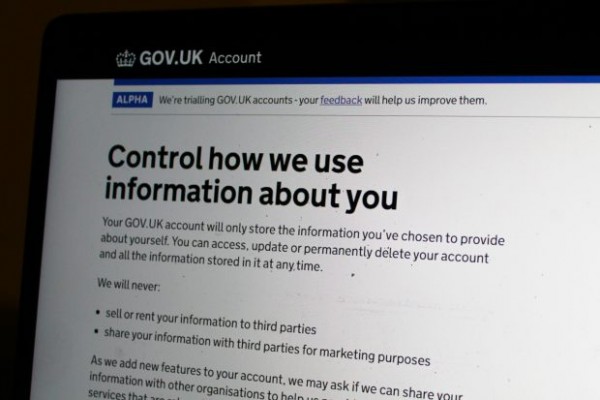
In the post-Brexit era, the UK government plans to overhaul current privacy systems in favour of an independent data regime. Source: Gov.uk
Prediction
Concerns about web privacy will continue to grow. We’ll see more laws like GDPR, which will develop and evolve, and the UK will introduce a new independent system which may diverge from the current UK-GDPR framework.
- As GDPR is clarified through test cases and further legislation, potentially including the ePrivacy Regulation, we’ll see the EU continue to lead the charge for privacy globally.
- Keep an eye on the United States, too, as states adopt new and further privacy legislation. The Biden administration is close to reaching a data-sharing agreement to replace Privacy Shield, the framework that allowed transatlantic sharing of customer data.
- More countries will embrace data protection - often baked into trade and security agreements negotiated with the EU.
- Businesses will shift away from third-party cookies and towards server-side tracking and automation – though some say this will favour the big tech platforms more than consumers.
- And to help them comply and protect customer data, businesses will adopt Privacy by Design, Security by Design and automation tools.
As designers and developers in the digital profession, it's down to us to build compliant, safe websites and digital products. That’s where Privacy by Design can help. We have a crucial role to play in the future of privacy on the internet – a good place to start is an audit with our GDPR checklist.
5. The Internet of Things – the world around us goes digital
“Alexa, what does the future of the world wide web hold?” It’s getting easier and more seamless to find information and make transactions using our voices. And that’s just one facet of the Internet of Things. From smart lightbulbs to self-ordering fridges, connected vehicles to body-monitoring wearables, we’re starting to see the potential of the web to save us time and even make us healthier.
As Geoff Mulgan, professor at UCL put it, “As the internet of things advances, the very notion of a clear dividing line between reality and virtual reality becomes blurred, sometimes in creative ways.” We’re starting to see that blurring now – and it’s going to transform the world around us.
Prediction
Over the next decade, being able to talk to your home, car or devices won’t just be a bonus – it’ll become essential. We’ll find new ways to integrate supportive and helpful technology into daily life, with automation and alerts to help us better manage our time and resources. We’ll see whole industries transformed by smart devices, robotics and automated software. And increasingly, those technologies will talk to each other, independent of humans.
But with these developments come security threats. More connected devices mean more potential entry-points for hackers and fraudsters. And, sadly, ‘tech abuse’, using tech such as spyware and smart devices for stalking and other abusive purposes, is now commonplace. Refuge, the domestic violence charity, recently launched a dedicated tech abuse website to support victims against a stratospheric increase in cases. We’re going to have to work hard as an industry to combat that. Standards and processes like Privacy by Design and Security by Design will be essential as we ensure that the websites, devices and services we build are hard to exploit.
6. Identity in the digital space
As the Internet of Things integrates with our lives, and our time shifts further to online or digitally enhanced experiences, we’ll start to reflect on what it means to be human. Where is the line between us and technology? With the singularity approaching, it’s going to get blurry.
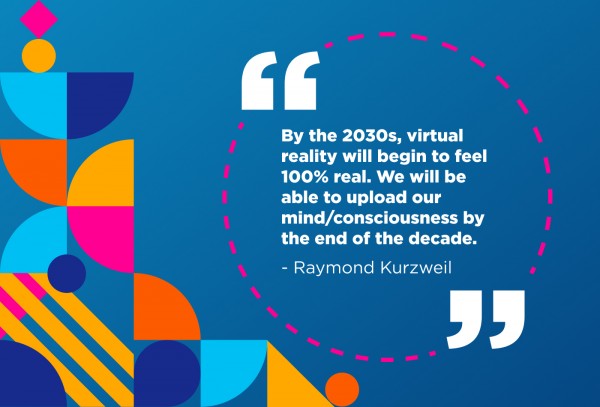
That might help me remember where I left my car keys, but along with the potential of AI, we’re going to have to deal with threats like deepfakes and – as we’re already seeing – mass-targeted misinformation. AI is advancing at speed. Deep learning systems are now able to produce realistic fake imagery and videos that indeed ‘feel 100% real’. If you think fake news is a problem right now, just wait a few years – there'll be a tsunami of the stuff.
But it’s not all bad news. AI doesn’t just produce deepfakes – it can also be used to combat them. Blockchain technology can give us far more powerful security checks and identity verification, for example by supporting Strong Customer Authentication (SCA).
Speaking of security, identity safety is becoming more of a concern as more and more areas of our lives become digitized. The British government have been developing a new digital identity framework, planning a future where physical documents will be replaced by digital identities. These will be used for purposes such as buying alcohol, opening a bank account, starting a new job, and any other circumstance where a person needs to prove their identity.
From April 2022, landlords and employers in Britain will be able to use digital identity document validation technology (IDVT) to carry out digital identify checks on prospective tenants or employees.
Many other countries are also putting plans in place to develop inclusive, internationally-recognised digital identity systems, such as the European Digital Identity Wallet.
Frameworks like these aim to:
- Reduce the risk of identity theft
- Reduce fraud to organisations and individuals
- Reduce manual data processing errors
- Aid post-pandemic economic recovery by facilitating trade and travel between countries

Matt Warman MP, Minister for Digital Infrastructure, is one of the MPs working on the government’s Digital Identity and Attributes consultation to create a new framework for the use of digital identities. Source: Gov.uk
Prediction
While technology is theoretically neutral, in practice, there are design biases and people who take advantage of tech for nefarious purposes. This means we’re going to see AI and blockchain used for good as well as evil. It’s likely to be a rocky ride – with some big winners and losers along the way.
Blockchain currently requires the use of large amounts of processing power and energy, but with refinement, regulation and the adoption of new structures, will start to become a more sustainable and widely-used solution in digital identity technology.
In the UK, the new digital identity frameworks are likely to be even more widely adopted and enhanced. Like the Estonian system, it’ll be underpinned by blockchain technology to ensure, for example, the security of your personal health data. And our data will be anonymised and could be used to inform policymaking.
This adds fuel to the need for digital accessibility, too – if an organisation as fundamental to our lives as the NHS adopts digital identification to deliver its services in person or on the web, we need to be sure that's done inclusively.
So what will the future of the world wide web be?
I’d like to finish with a quote from Sir Tim Berners-Lee.
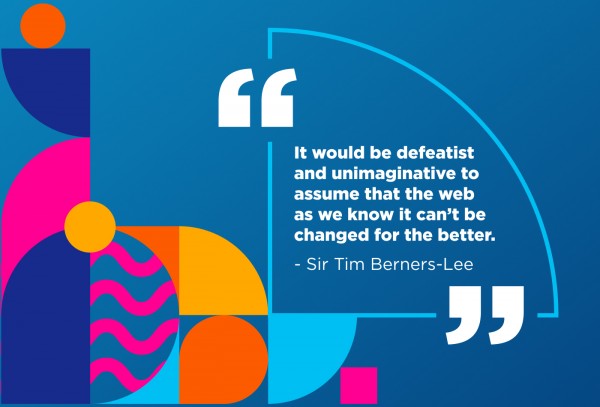
I wholeheartedly agree. Ask me what the web will be like in 30 years, and I’ll have to say, I’m not sure. But when I think about the future of the web by 2052, I know this: There will be things we predicted, some major surprises, and we’ll have made some things a lot better. And after all, isn’t that what makes our work in digital so much fun?
